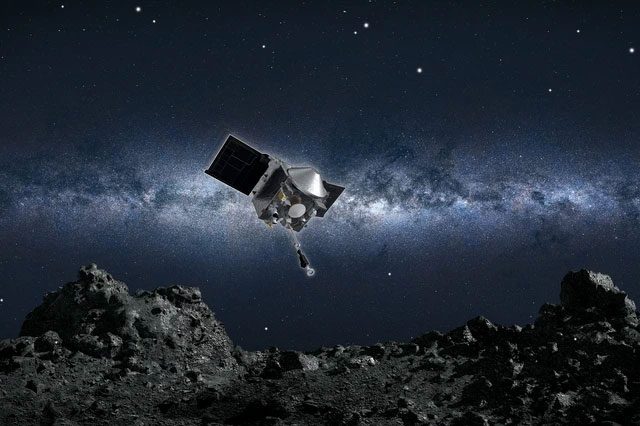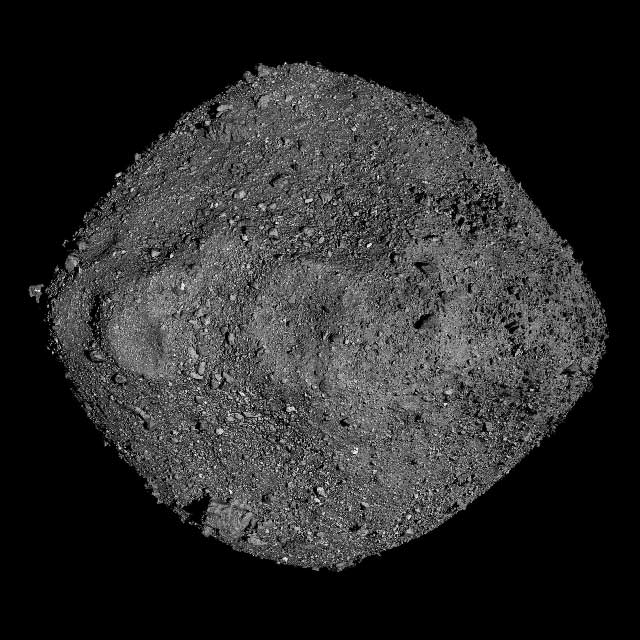The treasure brought back by NASA’s $1 billion mission is becoming increasingly valuable after analyses.
In mid-January this year, the team of curators for celestial materials at NASA’s Johnson Space Center completed the disassembly of the Bennu asteroid sample return container, which the OSIRIS-REx spacecraft delivered to Earth in September 2023. This container may hold treasures that reveal the origins of life.
NASA’s “treasure” container has been opened – (Photo: NASA).
Initially, some malfunctions prevented the container, dubbed TAGSAM, from opening. However, with only a small amount of dust remaining on the outside, NASA scientists and researchers worldwide discovered good news.
They collected 70.3 grams of material from Bennu from the exterior, sufficient for some initial analyses.
According to NASA’s announcement, this material contains water and carbon, the “backbone” of life!

OSIRIS-REx spacecraft flying over the surface of Bennu – (Photo: NASA).
With the materials just extracted from the inside of the container, NASA’s curatorial team placed them into circular sample trays.
These trays will be photographed before the samples are weighed, packaged, and stored at Johnson, which houses the richest collection of celestial materials in the world.
The remaining samples include dust and rocks measuring up to approximately 0.4 inches (1 cm). The final mass of the samples will be determined in the coming weeks.
According to the latest update from NASA, the curatorial team plans to release a catalog of all Bennu samples by the end of 2024, allowing scientists and organizations worldwide to submit requests for research or display.
These will be true treasures from outer space, primarily due to the intriguing origins of Bennu.
Officially named 101955 Bennu, this Apollo group asteroid was discovered in 1999.
This asteroid has an average width of 0.49 km and a mass of 74 million tons.

Asteroid Bennu – (Photo: NASA).
It tops the list of asteroids with the potential to collide with Earth, with a collision probability on September 24, 2182, of 1 in 2,700.
While this probability seems low, it still poses a significant threat as a collision with Bennu would unleash energy equivalent to the explosion of 1.4 billion tons of TNT.
This danger is one of the reasons NASA is interested in studying Bennu. However, for the foreseeable future, the treasure brought back by OSIRIS-REx remains the primary focus.
Moreover, many other treasures were revealed when the spacecraft approached Bennu a few years ago.
During its risky touchdown on Bennu, OSIRIS-REx sank about 70 cm into the landing area, reaching pristine materials completely different from the asteroid’s surface, untouched by cosmic rays or solar wind.
This was almost a stroke of luck: OSIRIS-REx accessed deeper materials that included slightly reddish substances, likely ancient organic molecules.
Bennu represents objects that have preserved their pristine state since the dawn of the Solar System. Therefore, the ancient organic materials within it could reveal the origins of life on Earth.
NASA’s observations have also uncovered bright streaks on some rocks of Bennu, which are carbonate salts formed through interactions with water.
This evidence suggests that water once flowed freely over these rocks and may even indicate traces of a hydrothermal system that once existed on Bennu’s parent body—a larger asteroid or planetesimal that was shattered due to collision.
A hydrothermal system is a structure that Earth also possesses, located on the ocean floor, consisting of a network of cracks on the surface of the planet, creating a region of water warmed by geothermal heat. On Earth, this is where scientists believe life began.


















































